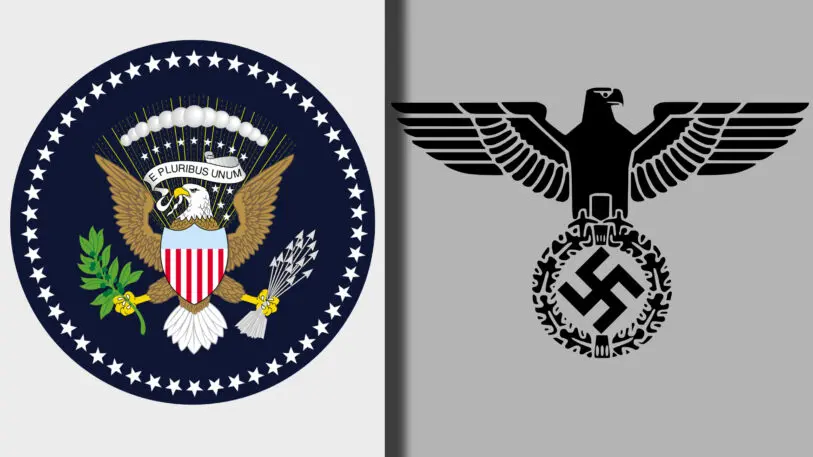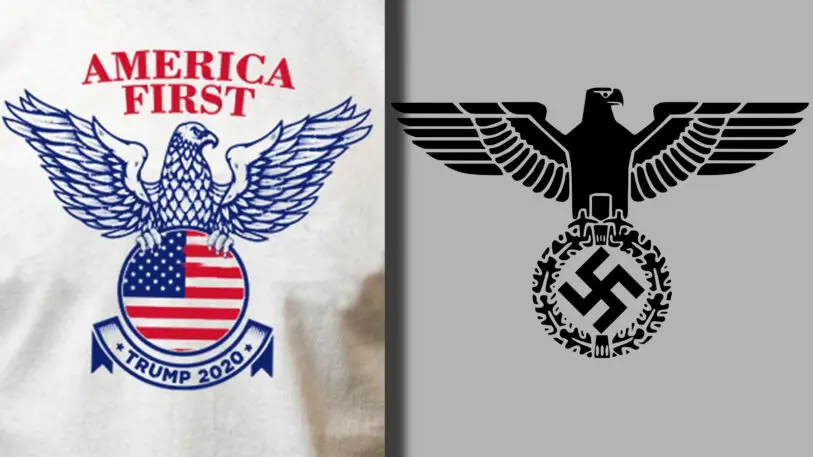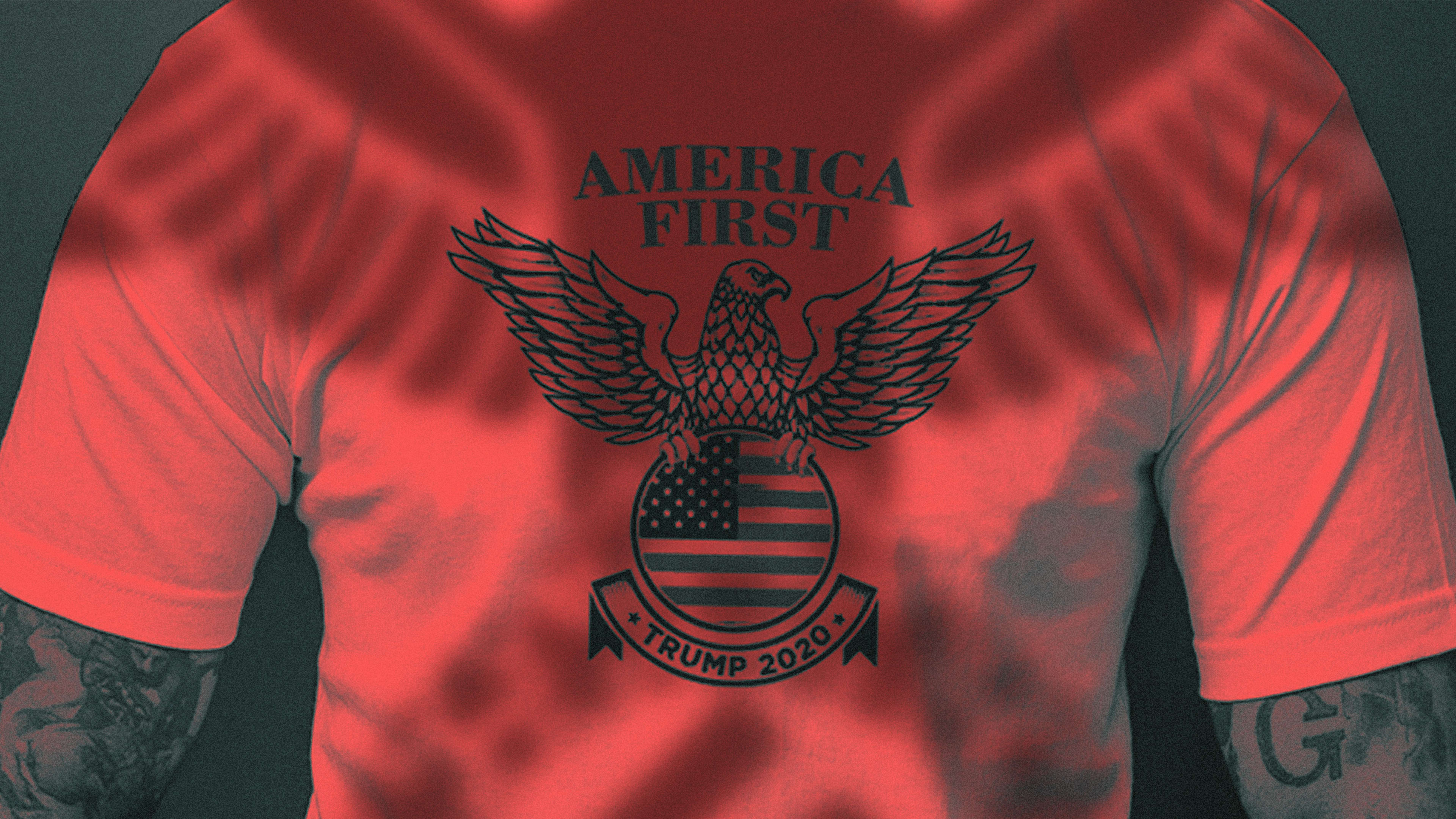A new T-shirt in the Trump campaign’s online store is stirring up controversy—and not because of what it says, but because of what it depicts.
The “America First” T-shirt shows an eagle with wings spread out, head facing to its left, feet closely tucked under it, clutching a circle filled in with the American flag. There’s a banner underneath that reads “TRUMP 2020,” and “AMERICA FIRST” is plastered above it. The symbol bears a striking resemblance to a Nazi-era eagle, which has since become a neo-Nazi symbol, according to the Anti-Defamation League.
The shirt met an immediate outcry on Twitter, including from progressive Jewish nonprofit Bend the Arc, which tweeted “bigotry is their brand” in response. Why does this particular eagle symbol matter? Like anything, the devil’s in the details.
What is the symbol’s origin?
The eagle that the Trump campaign screen-printed on the America First tees is most similar to an official Nazi party emblem called a Parteiadler, a Third Reich variant of the imperial eagle, which first emerged under the Roman Empire. The Parteiadler depicts an eagle atop a circle with a swastika inside it. In modern iterations, the swastika is sometimes replaced with other hate symbols, such as SS bolts or the Celtic Cross, or is left blank in countries where the swastika is banned, according to the ADL.
How is it different from the American eagle?
While the eagle is the national emblem of the United States, a comparison of the Nazi eagle to the American eagle falls apart under scrutiny. Beyond the fact that it’s the same animal, when you place the eagles side by side, it’s clear there are more differences than similarities.

For starters, the American eagle looks to its right, while the Nazi eagle looks to its left. President Truman actually mandated that the American eagle look to the right, toward the “direction of honor,” in an executive order following World War II. Another example: The Nazi icon has talons that are close together under its chest, holding up a circle with a swastika, as opposed to the U.S. eagle, which has a rectangular shield and talons that are spread out, holding 13 arrows in one and an olive branch in the other.
Put all this together and the Trump graphic is nearly identical to the Nazi symbol listed by the ADL. The differences may be subtle at first. But the meaning is loud and clear.

What has Trump’s response been?
The Trump campaign is playing up the connection to the American icon and feigning ignorance to any similarity with Nazi symbolism. It’s a familiar dance: Release a graphic with clear ties to white supremacy, stir controversy and attention, then deflect. But it’s worth noting that while the Trump campaign points to examples of eagles being used as a national symbol (Madeleine Albright wears an eagle pin!), it has yet to actually denounce the Nazi iconography itself or the connection between the two.
The fact that this symbolism appears on campaign merchandise is a clear part of Trump’s strategy to capitalize on outrage, as noted by NPR. By attaching a merchandise component that will outlast the news cycle, it’s able to turn the idea of “owning the libs” into campaign contributions.
Using these types of icons are part of Trump’s visual strategy to court white supremacists. Just two weeks ago, a series of Trump campaign ads were removed from Facebook for using a hate symbol—the red inverted triangle used in Nazi concentration camps. Last weekend, Trump retweeted a video of a supporter yelling “white power,” with his staff later claiming he hadn’t heard it. Just this week Trump called Black Lives Matter a symbol of hate. And he has sent multiple tweets (such as this and this) using fourteen words—a recall to a white power slogan. For anyone who wondered if the dog whistles were mere coincidence, the reality is that they’ve become a blaring cacophony that shouldn’t be ignored.
Recognize your brand’s excellence by applying to this year’s Brands That Matter Awards before the early-rate deadline, May 3.
